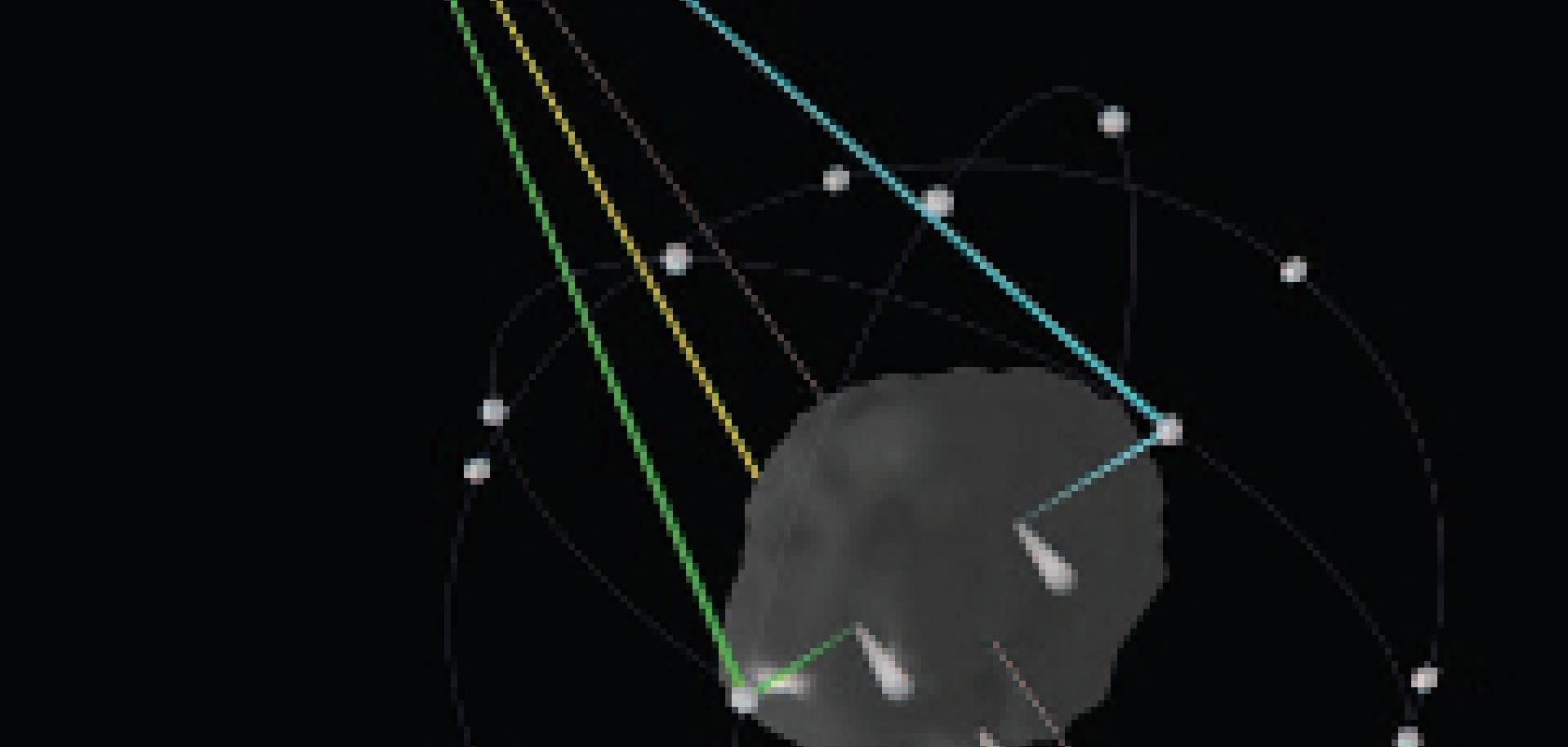How do you avoid an asteroid colliding with Earth? The answer, according to Dr Richard Fork at the University of Alabama in Huntsville (UAH), USA, might be to redirect it, or more specifically to slow it down, using ultrafast lasers.
In February 2013, a relatively small asteroid entered Earth’s atmosphere and exploded over Chelyabinsk, Russia with a force equivalent to around 500,000 tonnes of TNT. It caused widespread damage and injured more than 1,000 people.
NASA is currently running its Asteroid Grand Challenge programme to identify asteroid threats to human population. It’s also developing a robotic Asteroid Redirect Mission (ARM), which aims to capture and redirect an asteroid into a stable orbit around the moon in order to study it.
At the moment, there is no agreed method for protecting against another Chelyabinsk-sized asteroid – or one larger – hitting Earth. The approach proposed by Dr Fork is to slow the asteroid down such that it would miss Earth altogether. In order to do that, Dr Fork’s method involves using ultrashort-pulsed lasers to ablate material on the surface of the asteroid, the ejected material from which creates a force that pushes back against the asteroid, thereby slowing it down.
The method is still theoretical at the moment and Dr Fork is looking for funding to further his experiments. His group is currently developing a test-bed on which to measure the effects of the laser pulses used in micro-gravity.
‘Our approach is conceptually quite simple,’ Dr Fork explained. ‘It assumes the current effort by many different countries, and NASA, to detect asteroids before they hit Earth and predict when and where they’re going to hit is successful. We build our strategy around the expectation that the time at which the asteroid is going to strike Earth, and its path, will be known.’
Dr Fork’s method then applies highly energetic ultrashort optical pulses to the surface of the asteroid, so as to alter its velocity in such a way that the predicted collision is avoided and it misses Earth altogether.
The challenge is applying the pulses to the asteroid so the required change in the asteroid’s trajectory is achieved as efficiently as possible. The method requires either finding, or creating by remotely applied ablation, many sets of three or more optimally oriented and optimally positioned small locally flat areas.
The need for three pulses applied simultaneously as a group to slow the asteroid works according to the same principle as a table needs at least three legs to stand upright. The groups of three pulses, optimally applied, deliver the propulsive thrust required to prevent the collision, while avoiding wasting energy, by influencing the rotational motion of the asteroid, for instance.
Applying these precisely designed sets of pulses is demanding, but realistic, according to Dr Fork. ‘If you do the calculation for a Chelyabinsk-sized asteroid, there are literally millions of sets of three locations which can be effective,’ he said. The technical task still requires an extremely precise, constantly updated three dimensional map of the asteroid surface as a guide to the optimal application of the sets of pulses. Dr Fork proposes a related system of micro-spacecraft around 0.5m in diameter orbiting the asteroid that will both deliver the optical pulses and also support the creation and maintenance of this map.
Ideally implemented, this method will take around four months using 10kW of laser power to slow down a Chelyabinsk-sized asteroid (around 10,000 metric tonnes) enough to avoid it hitting Earth, according to Dr Fork. ‘The [laser] powers are fairly low, not much more power than used in a traditional home. It’s basically the precise metrology, computer-based calculations, and careful application of the force that makes this strategy so efficient,’ he commented.
Dr Fork’s method can be scaled up, he said, to deal with larger asteroids, since mode-locked ultrashort duration pulses from different lasers can be easily synchronised. However, he added the probability of a larger asteroid hitting Earth, while rather likely in the very long term, is still quite unlikely within the next decade or so.
Dr Fork’s team is currently building a model to test their method in the laboratory. The test material is balanced on springs that cancel out Earth’s gravitational force so as to simulate micro-gravity. The scientists’ then plan to measure the movement caused by multiple sets of three femtosecond pulses striking, in each case, the test material at three optimal points. The rotation of a typical asteroid means that the optimal set of points is continually changing from moment to moment. The scientists will then translate this data into a model of how the asteroid will behave in space.
 Greg Blackman is the editor for Electro Optics, Imaging & Machine Vision Europe and Laser Systems Europe.
Greg Blackman is the editor for Electro Optics, Imaging & Machine Vision Europe and Laser Systems Europe.
You can contact him at greg.blackman@europascience.com or on +44 (0) 1223 275 472.
Find us on Twitter at @ElectroOptics, @IMVEurope, and @LaserSystemsMag.


